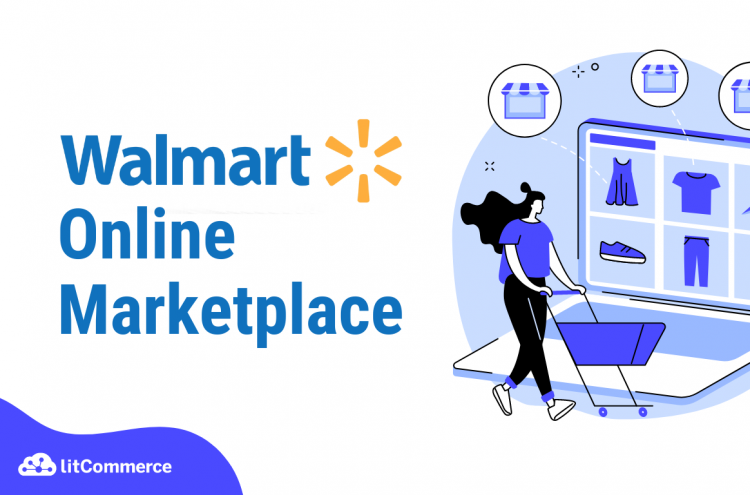If you’re looking for a powerful eCommerce platform to sell your products or shop for bargains, Walmart online marketplace should definitely be on your radar. As one of the largest retailers in the world, Walmart is one of the top marketplaces for selling products that give numerous benefits to both shoppers and sellers. But what exactly is Walmart online marketplace, and how to be successful selling at Walmart?
In this article, we will provide a comprehensive review of Walmart’s online marketplace, guide you on how to succeed as a Walmart seller with no worries. Now we’ll discuss the following aspects.
- What is Walmart Online Marketplace
- Why should you sell on Walmart
- Walmart Online Marketplace: An In-depth Review
- Requirements to sell on Walmart Online Marketplace
- How to Sell on Walmart Online Marketplace
Selling on Walmart with LitCommerce Today!
Selling your products at Walmart has never been easier! You can seamlessly integrate your inventory, streamline operations, and maximize your Walmart sales potential, all in one single place.
What is Walmart Online Marketplace?
Walmart online marketplace is a popular eCommerce platform that allows businesses to sell their products to millions of customers worldwide. The marketplace was launched in 2009 as a way for Walmart to expand its online presence and compete with other major players like Amazon and eBay.
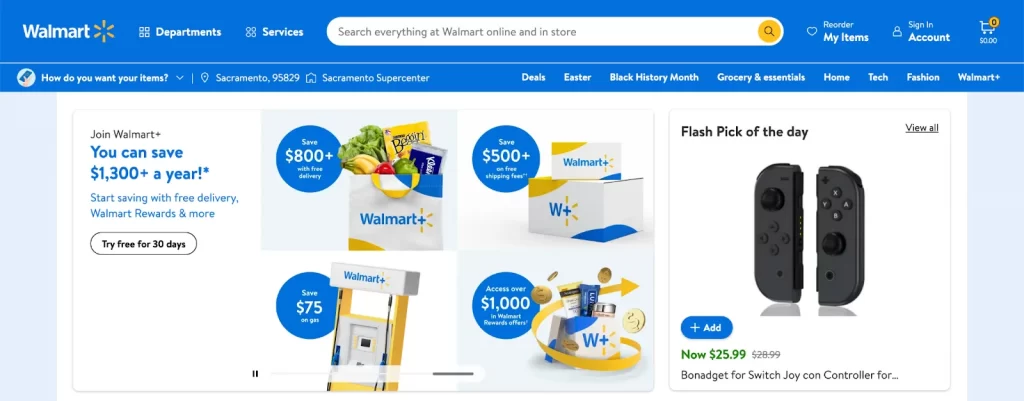
Walmart online marketplace is known for its low fees, fast payment processing, and extensive product categories, from electronics and clothing to home goods and groceries. The platform is also designed to give sellers greater control over their inventory and pricing, allowing them to optimize their sales strategies and grow their businesses. With the platform’s massive customer base and streamlined selling process, selling on Walmart is a must-consider for any online seller looking to expand their reach and boost their sales.
Why should you sell on Walmart?
Selling on Walmart Marketplace offers several advantages for businesses, here are some of the key benefits:
- Massive Customer Base: Walmart boasts a huge online customer base, reaching millions of potential buyers you might not reach through your own channels. This broadens your reach and exposes your products to a wider audience.
- No Monthly Fees: Unlike some marketplaces, Walmart doesn’t charge a monthly subscription fee. You only pay a referral fee for each sale you make, keeping more profit in your pocket.
- Increased Brand Exposure: By associating your brand with Walmart’s trusted name, you gain instant credibility and brand recognition with potential customers.
- Access to Walmart Fulfillment Services (WFS): Walmart offers optional fulfillment services, allowing them to handle storage, packing, shipping, and customer service for your products. This frees you up to focus on product development and marketing.
- Free Two-Day Shipping Advantage: By meeting specific criteria, you can offer free two-day shipping on your products, a major perk for customers and a potential boost to your sales.
- Advanced Tools and Analytics: Walmart provides sellers with tools to manage listings, track performance, and optimize pricing and promotions, helping you make data-driven decisions.
- Potential for Lower Competition: While growing, Walmart Marketplace might have less competition compared to giants like Amazon, offering a potentially easier entry point for some sellers. Statistically, Walmart has over 150,000 sellers, while Amazon has around 9 million.
Walmart Online Marketplace: An In-depth Review
In this in-depth review, we’ll cover everything you need to know about Walmart online marketplace, including pricing, shipping, seller protection, advertising, and fulfillment options like dropshipping and print-on-demand.
Let’s discuss them one by one!
1. Walmart Pricing
Walmart selling can be a cost-effective option for online retailers looking to expand their reach. It stands out from Walmart competitors like Amazon, eBay, Etsy, and Wish by offering a fee structure that benefits sellers.
Unlike other marketplaces that require listing fees and account fees, Walmart only charges selling fees when a sale is made. This means that businesses don’t incur any costs if they don’t sell anything, making it a low-risk option for sellers. Additionally, there are no setup, subscription, or monthly account fees for those who sell products to Walmart.
However, sellers are subject to paying a referral fee to Walmart each time an order is successfully delivered. This fee is calculated as a percentage of the product’s selling price and varies by item category, ranging from 6% to 15% of the item price. Learn more about a detailed breakdown on Walmart Marketplace fees here.
What’s more, the platform also offers various pricing strategies that can help ensure that customers get the best deal possible. This feature can be incredibly beneficial for sellers on the Walmart Marketplace, as it encourages customers to shop on the platform and helps increase sales.
Ready to Boost Your Walmart Sales with LitCommerce?
With LitCommerce, you can seamlessly integrate your inventory, streamline operations, and maximize your sales potential!
Are you wondering if Etsy is a good place to sell, check out our article Is Selling on Etsy Worth It in 2026: 6 Key Factors to Consider to get detailed reviews!
2. Walmart Shipping
I. Walmart expedited shipping options
Walmart expedited shipping options (two-day and three-day) bring numerous advantages to Walmart eCommerce store owners. Firstly, by offering faster delivery times, sellers can gain more visibility on the Walmart marketplace and increase their chances of making sales. Customers are more likely to choose products with expedited shipping options as it offers convenience and ensures the timely delivery.

Additionally, expedited shipping options help sellers grow sales by increasing customer satisfaction and loyalty. Customers who receive their orders quickly are more likely to leave positive reviews, recommend the seller to others, and make repeat purchases in the future. This can ultimately lead to an increase in sales and revenue for the seller.
Moreover, Walmart’s expedited shipping options offer regional flexibility, allowing sellers to cater to customers in specific areas. Sellers can choose to offer two-day or three-day shipping only to certain regions where they can guarantee delivery within the promised time frame. This can help sellers optimize their shipping costs and offer competitive pricing to customers in those regions.
II. Walmart fulfillment services
Walmart seller central comes with a fulfillment service to their sellers called Walmart Fulfillment Services (WFS). This service allows sellers to store their products in Walmart’s warehouses and have Walmart handle the shipping and delivery of orders. WFS also provides a fast and reliable shipping experience to customers, which can lead to increased sales and positive customer reviews.

This service provides several benefits to sellers, including access to Walmart’s extensive logistics network, the ability to offer two-day shipping to customers, and increased eligibility for the Buy Box. Utilizing Walmart’s Fulfillment Services, sellers can save time and money on shipping and fulfillment, and focus on growing their business.
The pricing for Walmart Fulfillment Services is based on a per-unit basis and varies depending on the size and weight of the item. The fees include storage, handling, and shipping costs, and start at $3.45 per unit for standard-size items weighing less than one pound. Additionally, Walmart offers discounted rates for high-volume sellers and for items that meet certain criteria, such as being eligible for free shipping.
3. Walmart Seller Protection
Walmart Seller Protection is a key feature of Walmart’s online marketplace that provides sellers with peace of mind by offering protection against fraudulent or unauthorized activity on their accounts.
I. Return policy
Walmart online marketplace brings sellers a comprehensive return policy to protect their business. The return policy outlines the conditions under which customers can return products, including the timeframe and reason for the return. This policy ensures that sellers have a clear understanding of what they can expect in the event of a return and helps them manage their inventory and customer relationships accordingly.
Walmart’s return policy allows buyers to return most products within 90 days of purchase. However, one thing sellers should know is that there may be restrictions and special instructions for certain items, such as marketplace items, freight/oversized/heavy items, luxury products, and hazardous materials. It’s important to familiarize yourself with these restrictions and instructions to ensure a smooth return process for your customers.
Moreover, sellers need to note that major appliances such as refrigerators, ranges, and washing machines are not accepted in stores and must be initiated through the Walmart app or website. The return window is within 30 days of accepted delivery, and the items must be in like-new condition, not installed, and include all original packaging.
Additionally, there’s a Walmart seller support team that helps manage returns and resolve any issues that may arise. This seller protection policy helps ensure that sellers are able to conduct business on the Marketplace with confidence and peace of mind.
II. Payment protection
Walmart offers payment protection to its sellers by ensuring that they get paid for their products sold on the marketplace. The payment is deposited directly into the seller’s account, ensuring a secure and timely payment process.

The payment schedule for Walmart sellers is based on a two-week cycle. The payment includes all sales made during the previous two weeks, minus the referral fees and any other applicable fees.
Moreover, Walmart accepts multiple payment methods, including credit cards. However, sellers are required to set up a payment account with Walmart, which includes verifying their identity and providing banking information for payment deposits. Once the account is set up, sellers can easily manage their payment preferences and view their transaction history.
III. Fraud prevention measures
Walmart has implemented several measures to protect its sellers from fraudulent activities on its marketplace. One of the measures Walmart uses is a risk assessment system that analyzes transactions and flags any suspicious activities. The system also tracks the reputation of buyers and sellers on the platform and can flag those with a history of fraudulent behavior.
Besides, Walmart online marketplace also offers chargeback protection to sellers. Chargebacks occur when a buyer disputes a charge with their credit card company, and the seller is required to provide evidence of the transaction to avoid a chargeback fee. With Walmart’s chargeback protection program, the platform covers the cost of the chargeback fee for eligible sellers.
Additionally, Walmart provides educational resources to third-party sellers on how to protect themselves from fraud, including best practices for verifying orders, detecting counterfeit products, and identifying phishing scams.
4. Walmart Marketing
Do you want to promote products on Walmart? Here are three excellent features for you to leverage.
I. Walmart SEO (Search Engine Optimization)
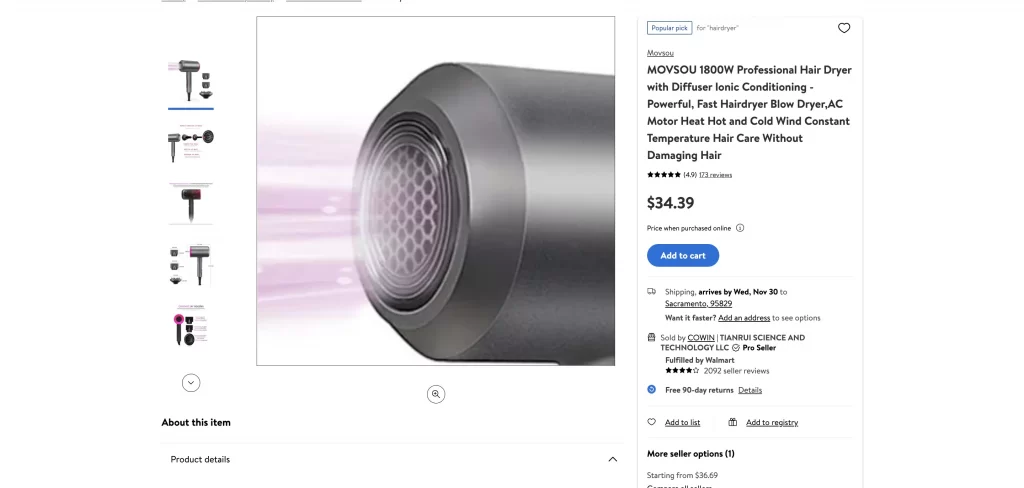
The first thing you need to care about when implementing the marketing strategy on Walmart is Walmart SEO. Walmart offers multiple features that support search engine optimization (SEO) for sellers. One of these is the ability to customize product titles and descriptions with relevant keywords, which can help improve a product’s visibility in search results. Sellers can also add product attributes such as brand, color, and size to make their products more discoverable.
Another Walmart SEO feature is the ability to optimize product images. Sellers can add multiple high-quality images that showcase their products from different angles and provide detailed product information, which can help increase their chances of appearing in search results. Additionally, Walmart allows sellers to add videos to their product listings, which can help increase engagement and conversion rates.
II. Paid advertising options
Walmart online marketplace provides paid advertising options to help sellers promote their products and drive sales. As a Walmart seller, you can take advantage of sponsored products, which are pay-per-click ads that appear at the top of search results on the Walmart website. These ads can help your products get notifications when shoppers are searching for similar items.

Additionally, Walmart also supports display ads, which appear on product detail pages and category pages. By using these paid advertising options, you can increase the visibility of your products on the Walmart online marketplace and reach a wider audience of potential buyers. This can help you drive more traffic and sales to your online store.
Here are some examples of the pricing range for different Walmart advertising options:
- Sponsored Products: Cost-per-click (CPC) bids start at $0.10, and you can set a daily budget as low as $1.
- Display Ads: Cost-per-impression (CPM) bids start at $2, and the minimum campaign budget is $100.
- Sponsored Brands: CPC bids start at $0.10, and the minimum campaign budget is $100.
- Walmart Performance Ads: CPC bids start at $0.10, and the minimum campaign budget is $500.
III. Social media marketing
What’s more, Walmart Marketplace sellers also have various social media marketing options to promote products on various platforms such as Facebook and Instagram. By leveraging these advertising options, sellers can reach a wider audience and drive traffic to their products on Walmart online marketplace.
Walmart marketing strategy also provides tools to track and analyze the performance of social media campaigns, allowing sellers to optimize advertising strategies and improve their return on investment (ROI). With these features, sellers can increase their brand visibility, generate more traffic to their listings, and boost sales on Walmart online marketplace.
5. Walmart Dropshipping
Walmart allows sellers to use dropshipping as a fulfillment method on their marketplace. This means that sellers can sell products without ever physically stocking them. Instead, the seller purchases the product from a third-party supplier who then ships the product directly to the customer.

Dropshipping on Walmart comes with several benefits, such as selling your product under Walmart’s name, which instills consumer trust and increases the likelihood of sales. Additionally, Walmart handles all listing optimization and product marketing, which improves product visibility and ranking. Walmart also covers the cost of shipping products to customers, which can relieve a significant price burden for brands, especially for expensive-to-ship products.
However, dropshipping also has some drawbacks. Walmart drop ship vendors sell their products at wholesale prices, which means lower profit margins compared to selling products directly on this marketplace. They also cannot make sales in bulk, unlike the 1P model, where Walmart buys products in bulk from the seller.
6. Walmart Print on Demand (POD)
Print on Demand (POD) is a popular method for creating custom products that can be sold on Walmart online marketplace. This service allows sellers to create and sell custom-designed products on the Walmart marketplace without upfront costs or inventory. Walmart POD works by printing products only after they have been ordered by customers, eliminating the need for sellers to invest in inventory or manufacturing.
The benefits of POD for sellers include the ability to offer a wide range of custom products without the risk of overstocking, as well as the convenience of having Walmart handle the printing, shipping, and customer service. With POD, sellers can focus on creating unique designs and promoting their products, while Walmart takes care of the rest.
Sellers can also leverage the best seller Walmart products to select their POD items. There are popular products from top-rated sellers that bring additional exposure to customers such as clothing items, home decor, etc.
Scale eCommerce Business with Multichannel Selling
LitCommerce empowers you to effortlessly list and manage your products on Walmart and many other selling platforms, all in one single place. Unlock the potential of the eCommerce world today!
Requirements to sell on Walmart Online Marketplace
Here are the key requirements to sell on Walmart Online Marketplace. You should compile all the requirements so that you can process and start selling faster.
Business Qualifications:
- Business Registration: You need a valid Business Tax ID (EIN) or a Business License Number. Social Security Numbers (SSN) are not accepted.
- Verifiable Business Location: Documents like a W-8 or W-9 form and an EIN Verification Letter from the Department of Treasury are required to verify your business address and operation location.
- Ecommerce Success History: Walmart prefers sellers with a proven track record of successful online sales on another marketplace or platform. This demonstrates your ability to handle online selling effectively.
Product Requirements:
- Compliant Products: Your products must strictly adhere to Walmart’s Prohibited Products Policy. This policy outlines categories and specific items not allowed for sale on the platform.
- GTIN/UPC Codes: Each product you sell needs a unique Global Trade Item Number (GTIN) or a Universal Product Code (UPC). These codes identify your products in a standardized way.
Fulfillment and Customer Service:
- Fulfillment System: You need a reliable system to fulfill customer orders, including storage, packing, and shipping. This can be handled through Walmart Fulfillment Services (WFS) or a separate B2C warehouse located in the US with returns capabilities.
How to Sell on Walmart Online Marketplace
After making sure all the requirements are met, it’s time to discuss how to start selling on Walmart Marketplace by following the steps below:
1. Create a seller account
Go to Walmart Marketplace’s website and fill in information to create a new seller account.
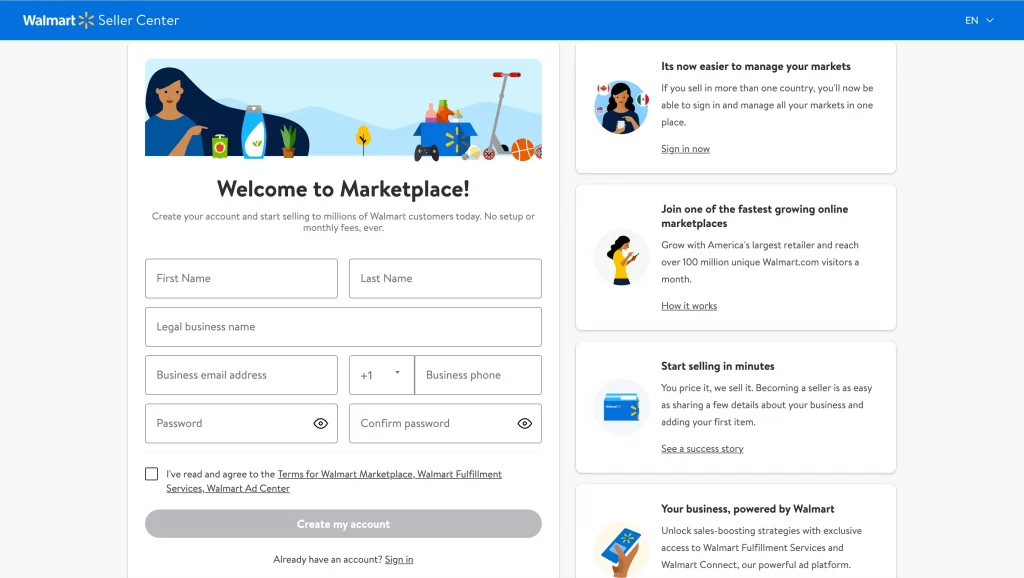
2. Set up your payment preferences
You can choose among 3 payment methods: Payoneer, Hyperwallet and PingPong. Please note that you must create a Hyperwallet account regardless of whether you use it as a payment method. Choose “Create account” to get started.
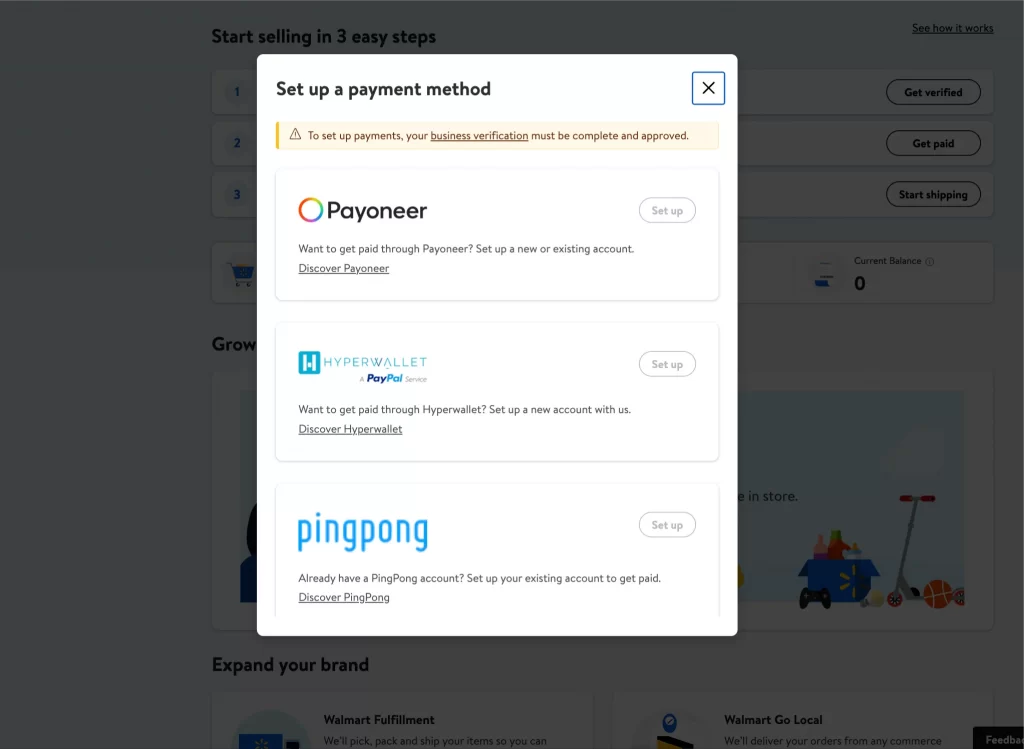
3. Configure your shipping options
The last step is set up your shipping template. To do this, click “Start shipping”. In this setting, you can set up the delivery regions, prices and shipping speed for your items based on product height or weight. Once done, click “Submit” to save your setting.
Next, you need to set up a Return center that will handle returns.
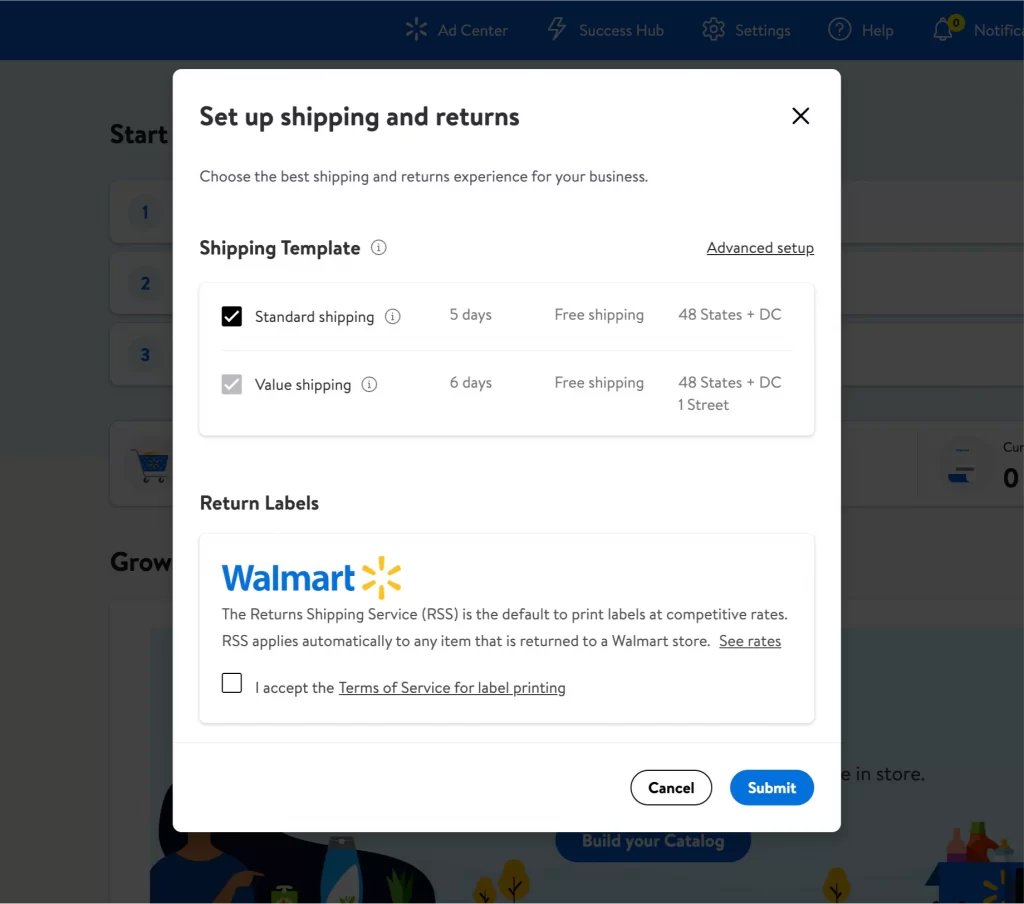
4. List your products on Walmart Marketplace
Once you’re set-up, you can start setting up your items on Walmart Marketplace. To do this, click on the “Build your catalog” button.
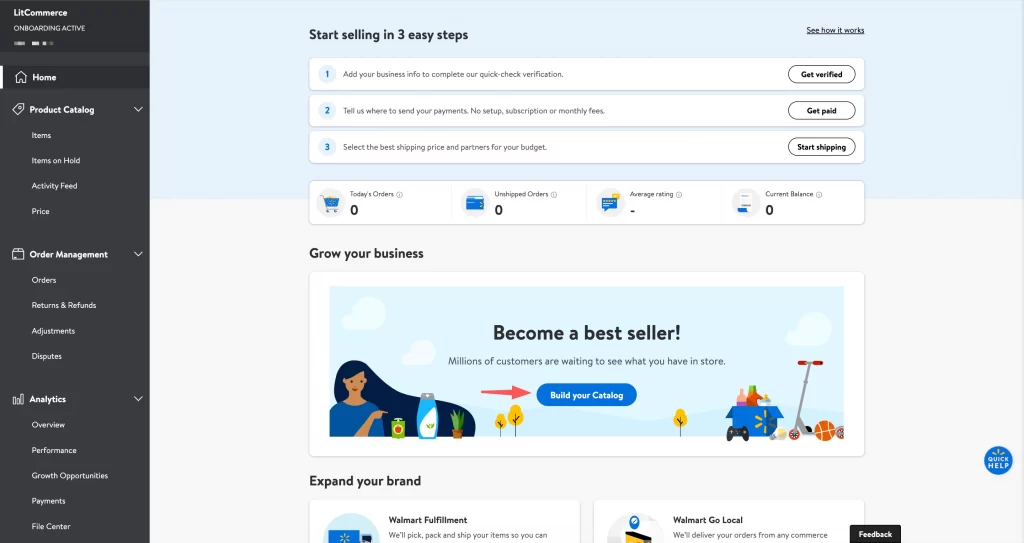
Then, select “Add items” on the top right corner. Here, you can add an item using an XLSX file (up to 5MB).
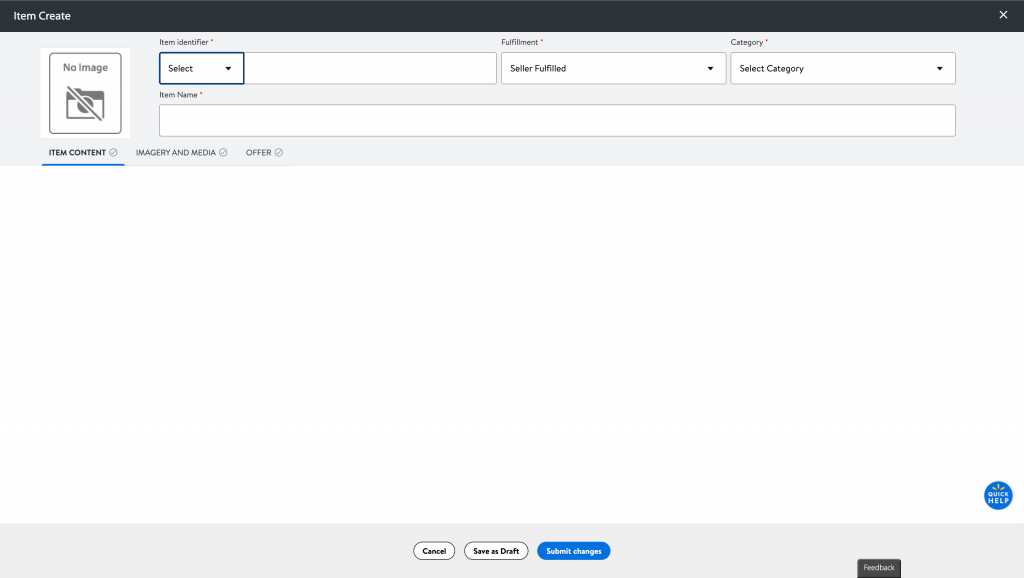
After that, hit “submit changes,” and Walmart will review your items. If your items got approved, it will be automatically listed on Walmart.
Walmart Online Marketplace: FAQs
Yes, selling on Walmart can be worth it, as it provides access to a large customer base and can help increase brand exposure. However, it is important to find Walmart top selling items and weigh the associated costs. It is also important to comply with Walmart’s policies and requirements, including product quality standards and customer service guidelines. There is no cost to sign up or maintain a Walmart Marketplace seller account. Instead, Walmart charges a referral fee for each completed sale, ranging from 6% to 15% depending on the category and sale price of the item. Yes, Walmart Marketplace is a reliable platform for both buyers and sellers. Walmart has a strong reputation for customer service and quality assurance, and the marketplace has strict seller standards and policies in place to ensure a positive experience for all parties. To sell on Walmart Marketplace, you’ll need Walmart marketplace seller login and meet certain requirements, such as having a US-based business and being able to fulfill orders within the required timeframe. Once approved, you can list your products and start selling to Walmart’s large customer base.
Conclusion
In conclusion, Walmart online marketplace offers a range of features and benefits for sellers looking to expand their reach and increase sales. Walmart cost is highly competitive compared to other best selling platforms. It also provides reliable shipping options, including free two-day delivery and hassle-free returns, ensuring customer satisfaction.
Additionally, the marketplace offers seller protection and extensive advertising opportunities, empowering sellers to grow their businesses and reach a broader customer base. The platform also supports innovative business models like dropshipping and POD, making it an attractive option for entrepreneurs looking to enter the eCommerce market.
Although there is always room for improvement in terms of customer service and seller support, Walmart online marketplace is a promising choice for those seeking a convenient and profitable shopping experience.
Check out LitCommerce solutions for eCommerce management for the latest updates and feel free to drop us a message if you are looking to expand to Walmart. Also, join our Facebook community as well as our Retail Blog if you want to know more business growth hacks!

